Wild Basin: Trail of the Waterfalls
One Comment
Away from the main road and communities, the relatively little-known Wild Basin area offers a quieter experience in Rocky Mountain National Park, perfect for a cloudy day if you enjoy photographing moving water.
Following a peaceful forested stream, you can photograph four diverse waterfalls within a 6 mile RT hike (950 feet elevation gain).
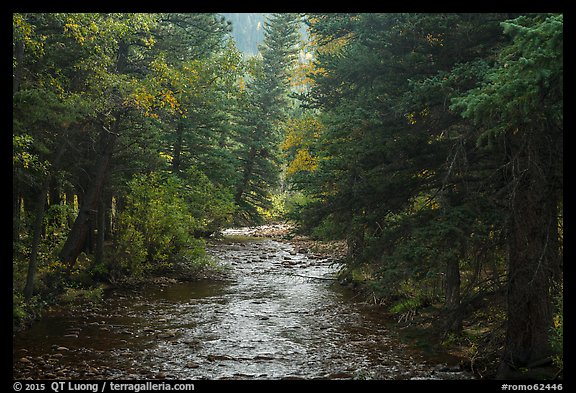
Since your main subject is flowing water, you should bring a tripod. It lets you use long exposures to render water as a smooth flow. Using a polarizer, I found that at ISO 50 (lowest available on my camera) and f/11-f/16, I could get exposures in the 1/4s-1s range, which smoothed the water while retaining some texture. The polarizer has the additional benefit of removing the surface glare from wet rocks. This makes them darker, creating contrast with the flowing water.
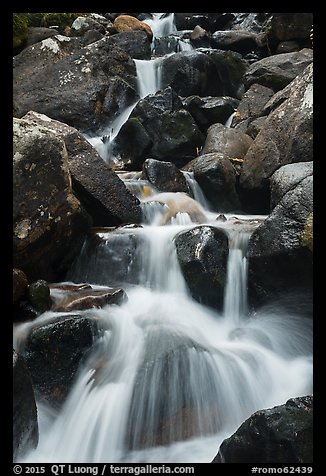
Despite all this water, I had trouble to find something to drink. In September, there were plenty of room in the USFS Olive Ridge Campground where I stayed, close to the Wild Basin entrance. However, there was no running water. Although the official NPS map states that water is available at the entrance station, I found it had been turned off there. I certainly didn’t want to drive 14 miles to Estes Park just to refill my water bottles! In the nearby small community of Allenspark, businesses were closed in the early morning. Fortunately, an innkeeper helpfully pointed me to a public source of water. Called Crystal Springs, it is located by the Allenspark business route Highway 7 up the road from the Fawnbrook Inn. The water is filtered directly from a mountain spring, keeping a delightfully fresh taste.
Copeland Lake
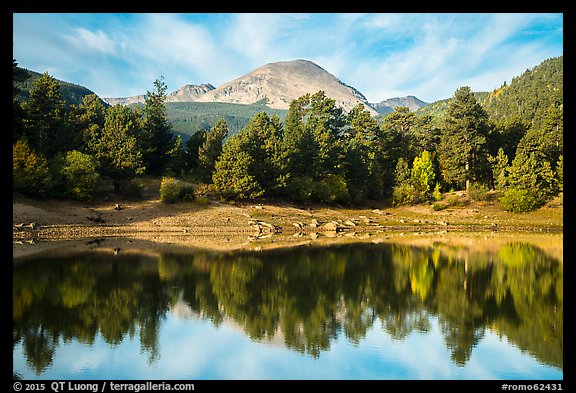
Shortly past the entrance station, Copeland Lake offers a decent roadside view with the reflection of Mount Copeland in the early morning. On that mostly cloudy day, I waited patiently for a bit of sunshine.
Copeland Falls
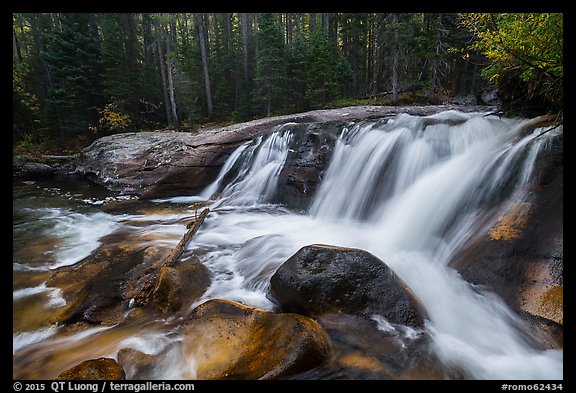
The first waterfalls, Lower and Upper Copeland Falls are less than 0.5 mile from the trailhead. North St. Vrain Creek drops only about fifteen feet there, but there are many compositions possible along the secondary trail that follows the creek between the two waterfalls. Even on a sunny day, if you arrive early enough, the creek will still be in the shade.
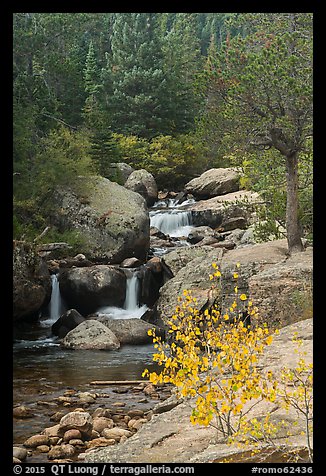
Calypso Cascades
Calypso Cascades is 2 mile from the trailhead, and is most easily photographed from the footbridge. Taking advantage of the autumn’s low flow, I also tried to scramble on the rocks for a different composition with a closer foreground. The staircase-like succession of drops should be a spectacular sight earlier in the season.
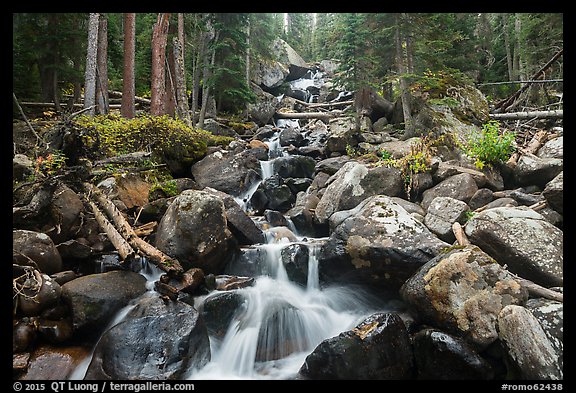
Ouzel Falls
The last waterfall, Ouzel Falls, is one of the most spectacular in the park. Ouzel Falls is quite distant from the bridge, but you can leave the main trail just before it, and follow a user trail to the base of the waterfall. Ouzel Falls faces south-east.
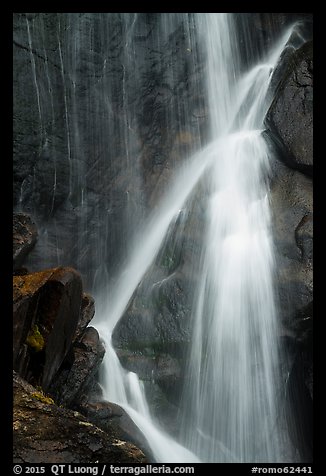
Cloudy weather works best for most of this hike. In such weather, I focussed on a close-up of Ouzel Falls, whereas in more sunny conditions, I would have tried to include it as part of a larger landscape.
View more images of Rocky Mountain National Park


Many years ago I frequented Wild Basin, a wonderful hike. Ouzel falls is named after the Ouzel birds, which dive into the water for food.